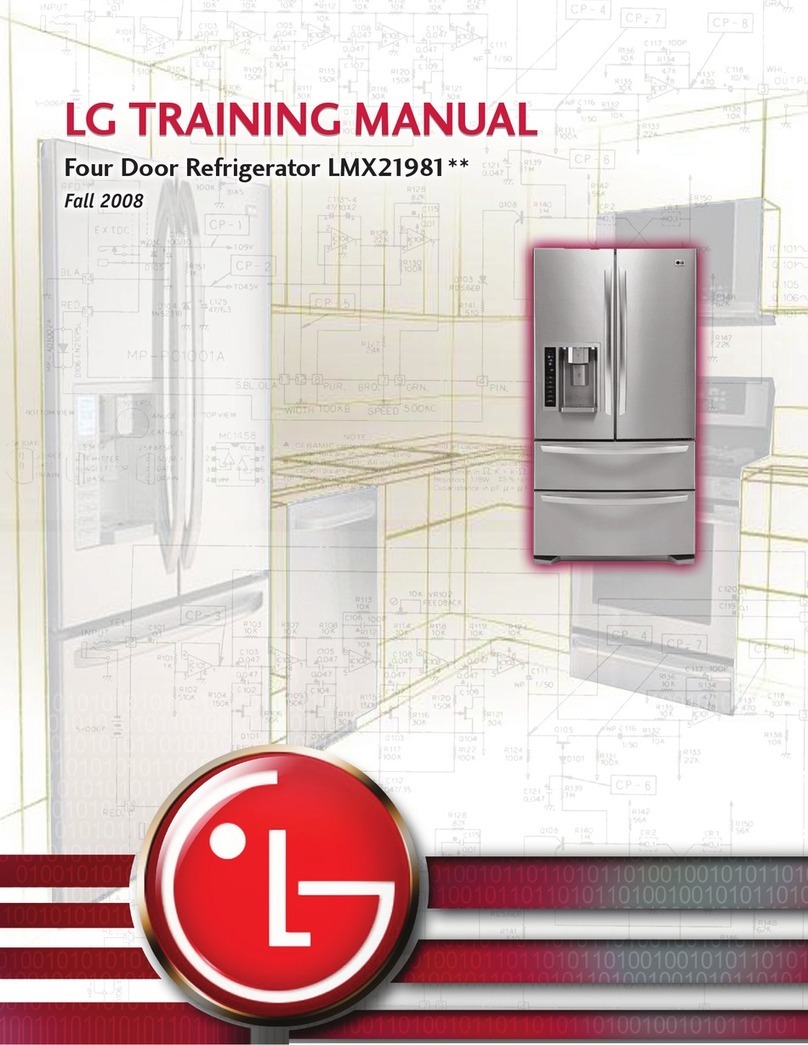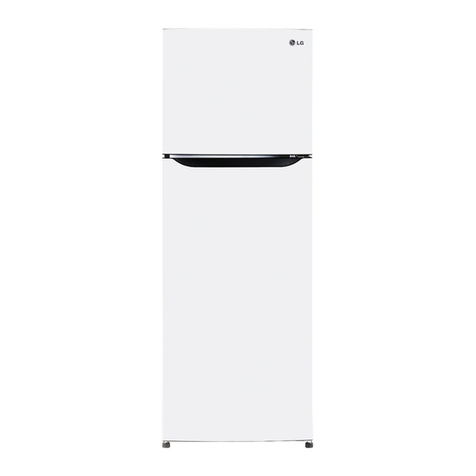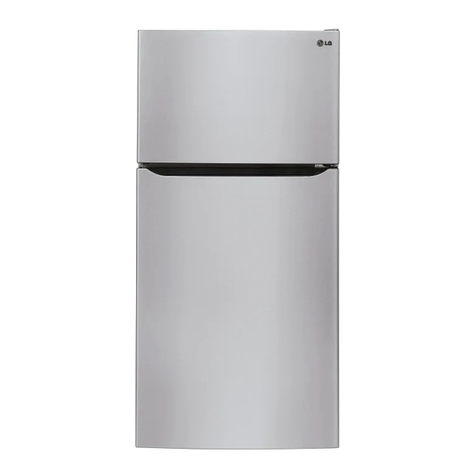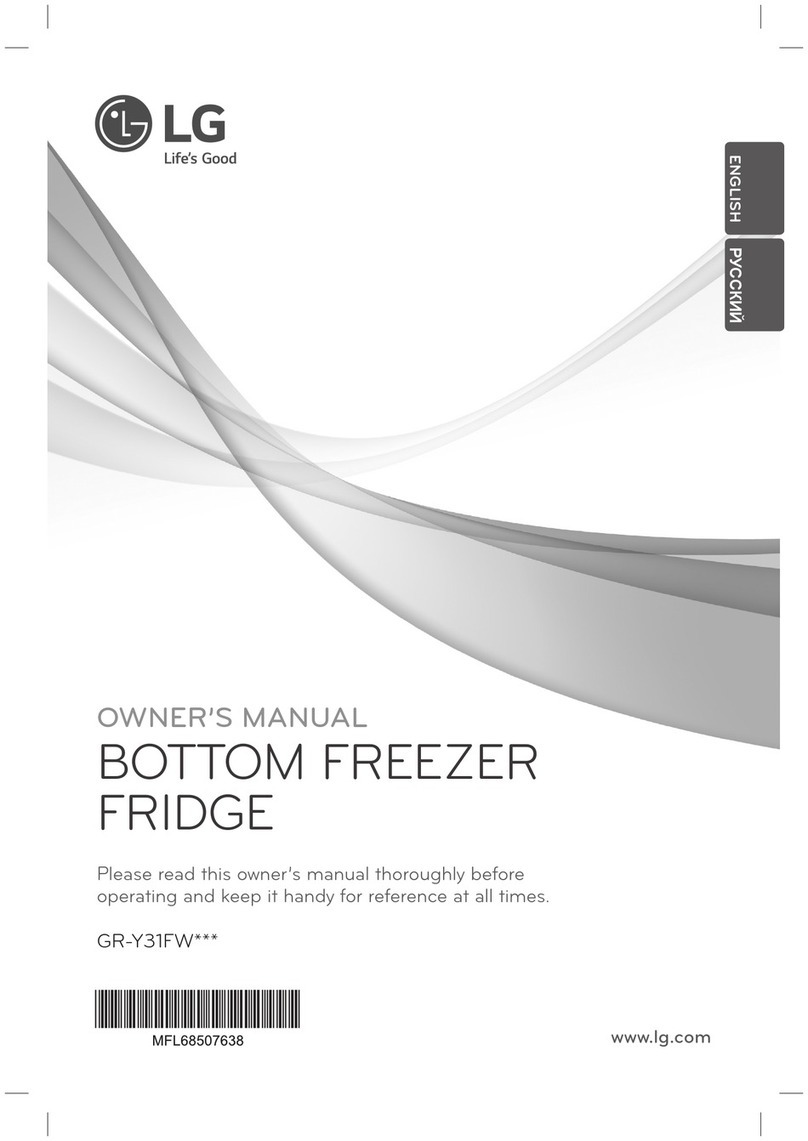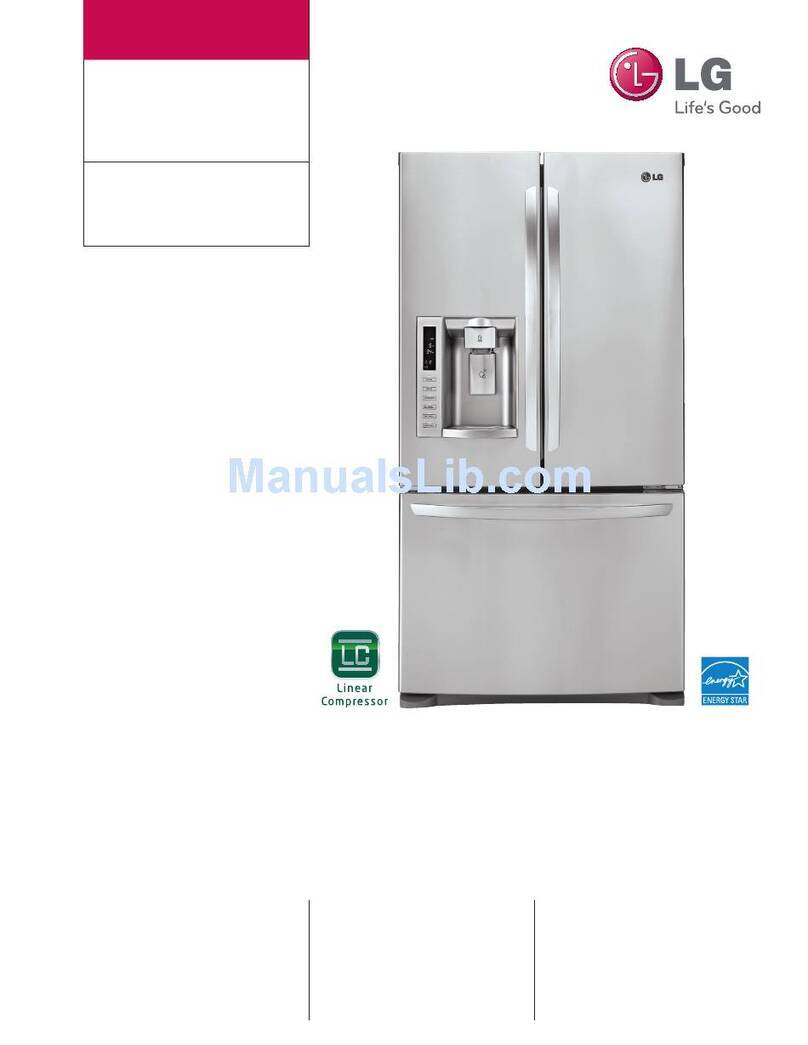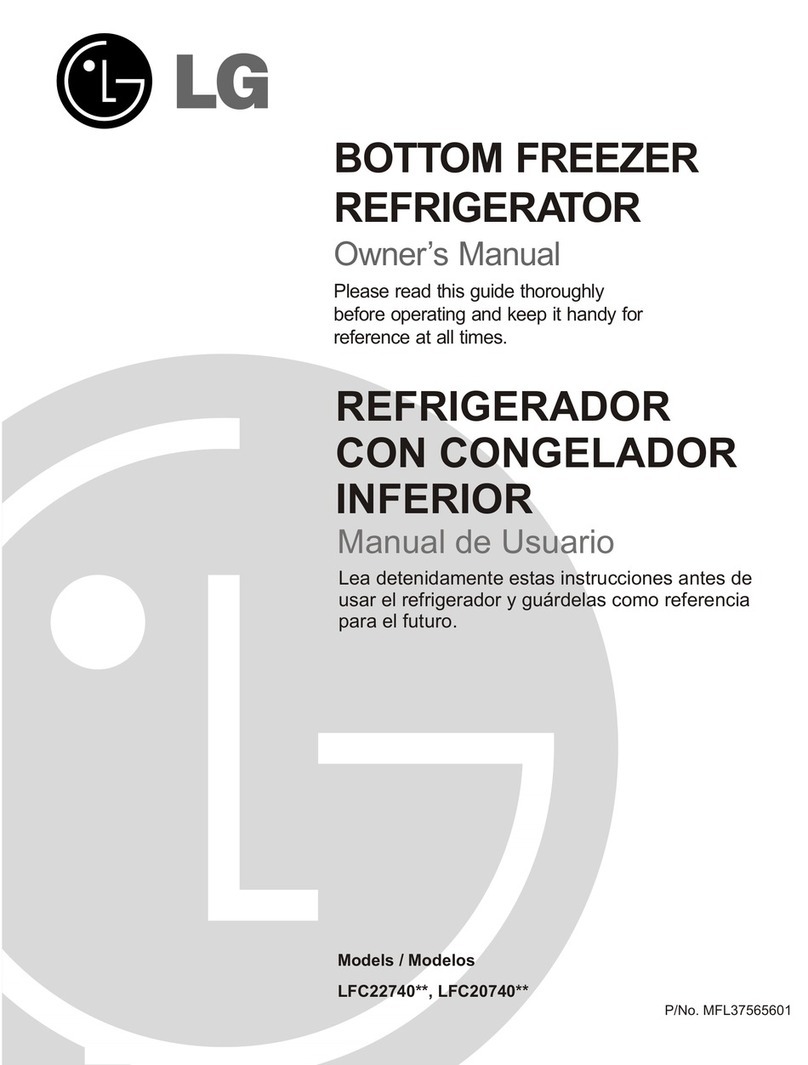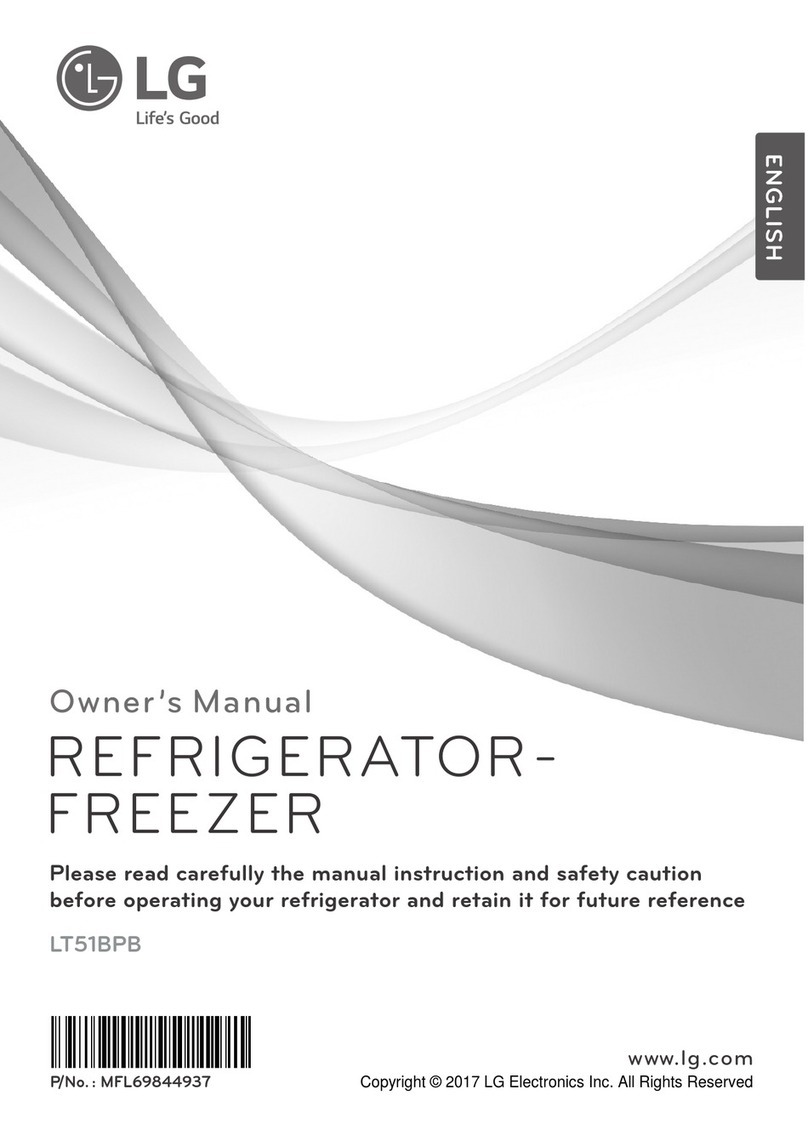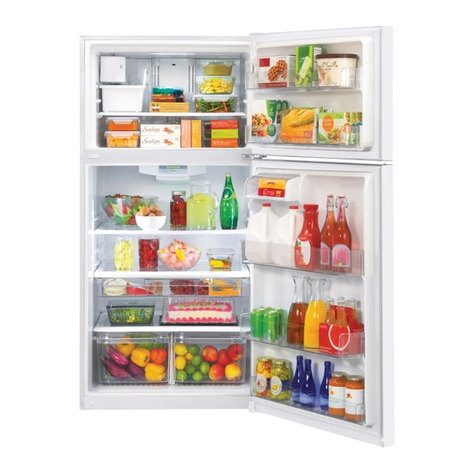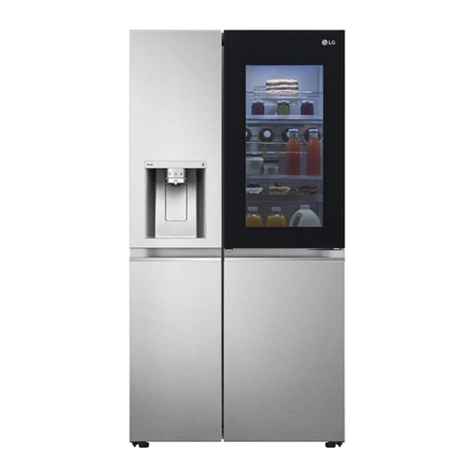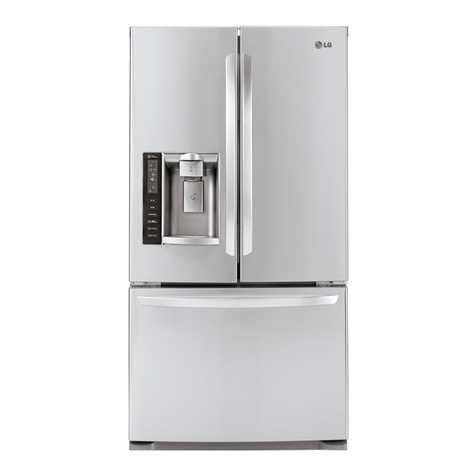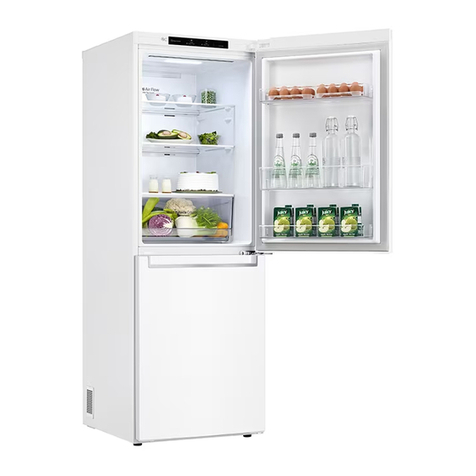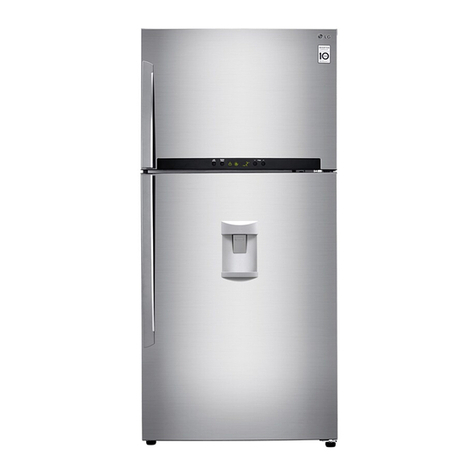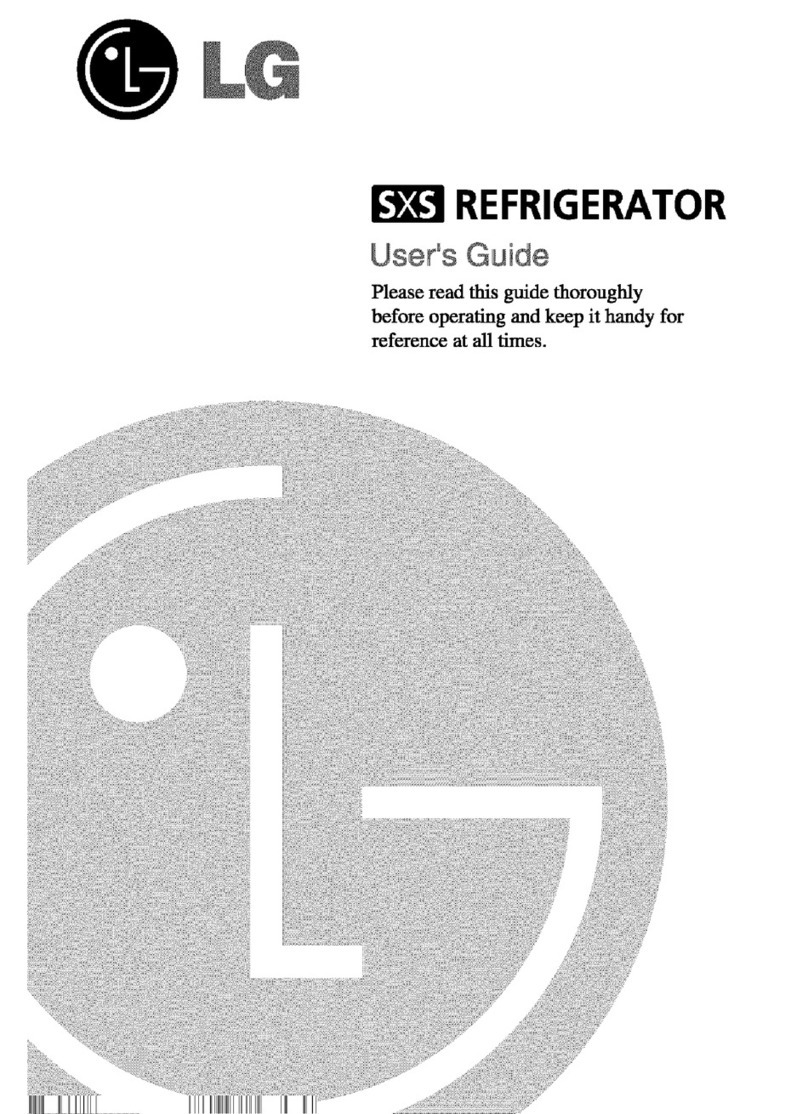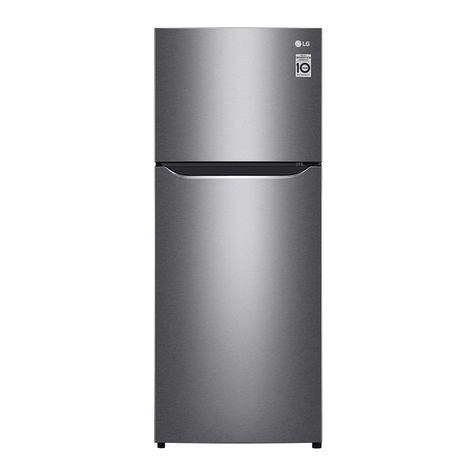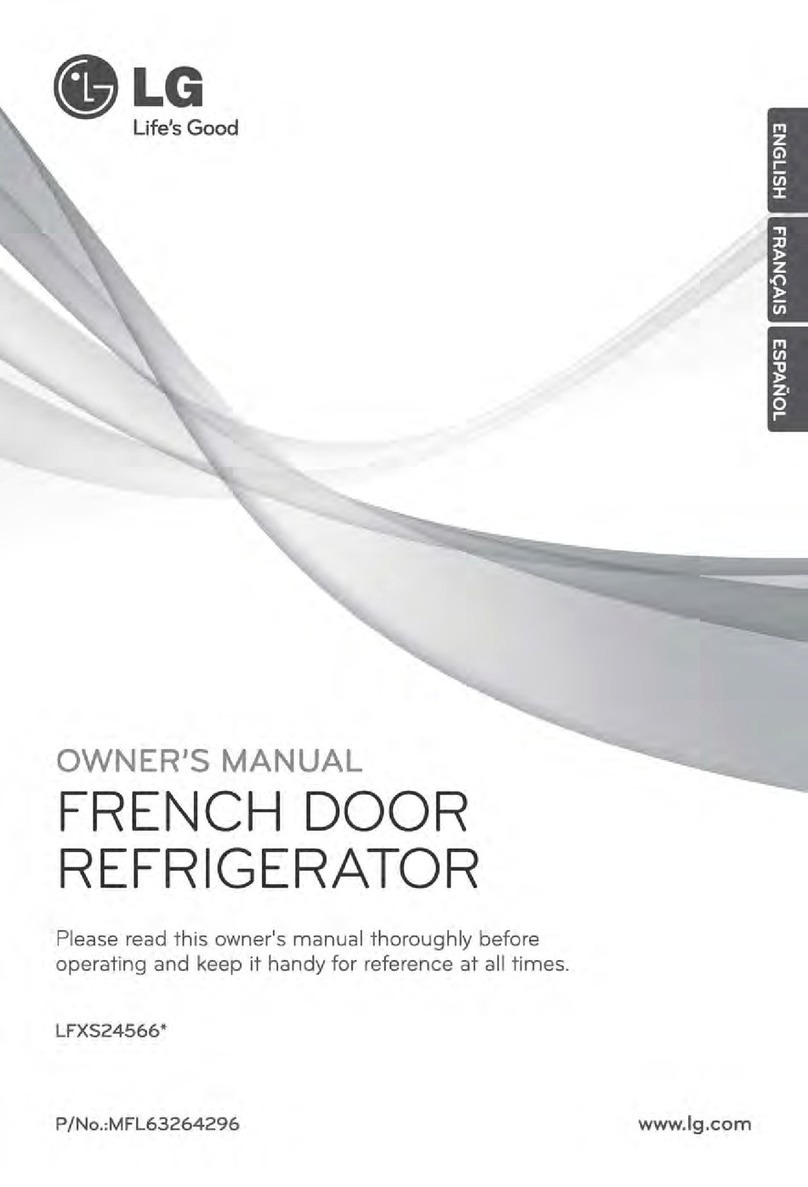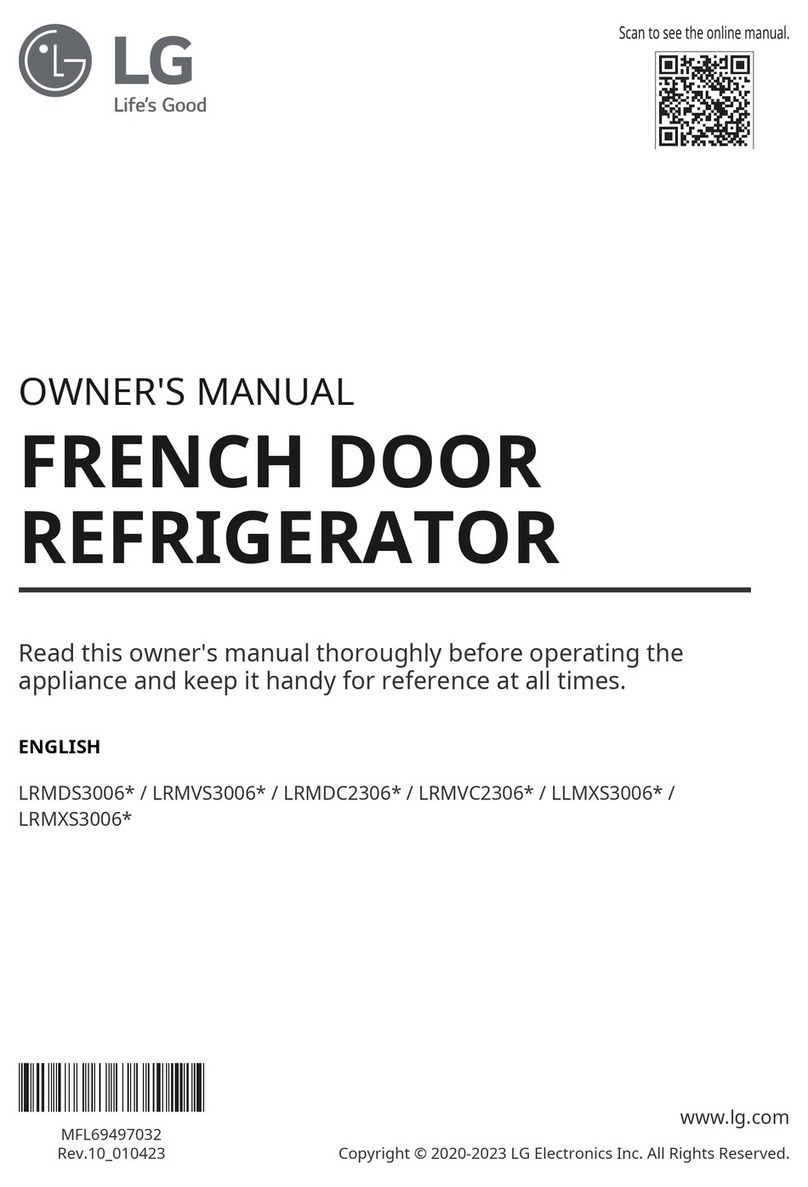5
Introduction
Danger
Important Safety Instruction
Risk of child entrapment.
Before you throw away your old refrigerator or freezer:
Take off the doors.
Leave the shelves in place so that children may not easily
climb inside.
wwWarning wKeep ventilation openings, in the appliance enclosure
or in the built-in structure, clear of obstruction.
wDo not use mechanical devices or other means to
accelerate the defrosting process, other than those
recommended by the manufacturer.
wDo not damage the refrigerant circuit.
wDo not use electrical appliances inside the food
storage compartments of the appliance, unless they
are of the type recommended by the manufacturer.
wThe refrigerant and insulation blowing gas used in
the appliance require special disposal procedures.
At disposal, please consult with service agent or
a similarly qualified person.
Don't store
Don't store or use gasoline or other flammable vapors and
liquids in the vicinity of this or any other appliance.
Grounding
(Earthing)
In the event of an electric short circuit, grounding (earthing)
reduces the risk of electric shock by providing an escape
wire for the electric current. In order to prevent possible
electric shock, this appliance must be grounded. Improper
use of the grounding plug can result in an electric shock.
Consult a qualified electrician or service person if the
grounding instructions are not completely understood, or if
you have doubts on whether the appliance is properly
grounded.


